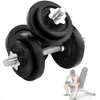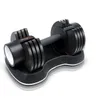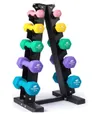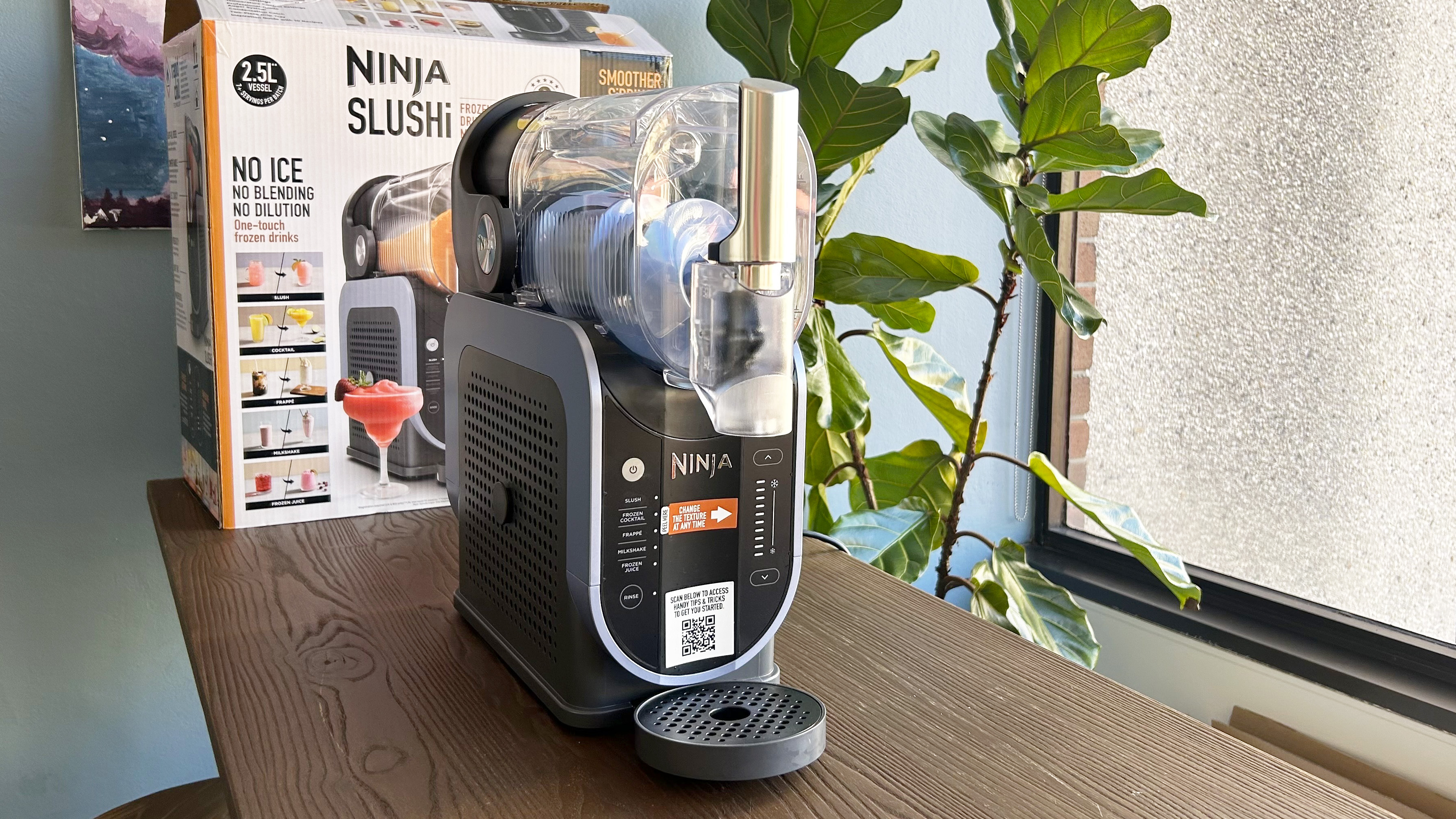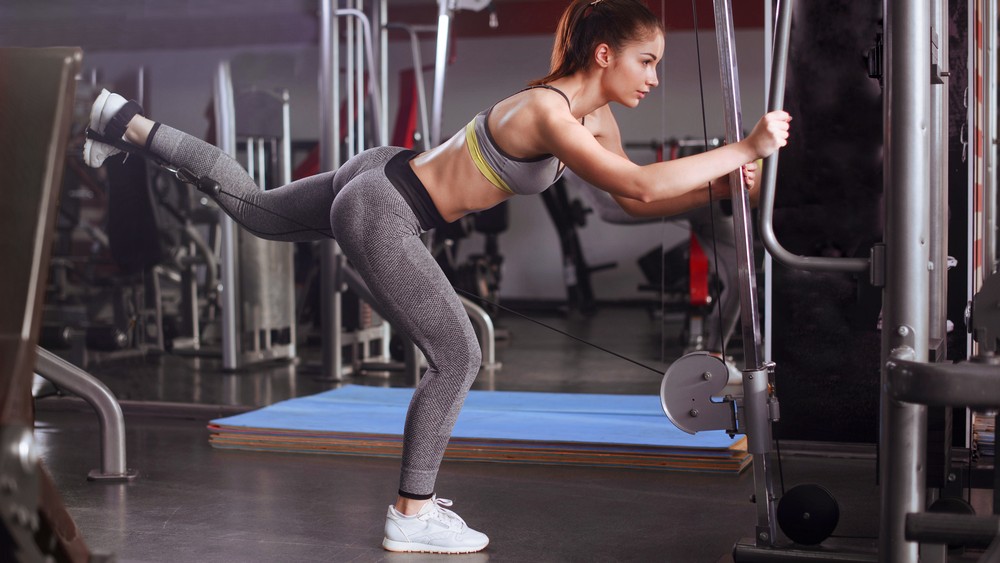
“Glute Guy” Bret Contreras knows what it takes to sculpt your glutes, having created the hip thrust himself, he also runs the infamous Glute Lab in San Diego. Contreras shares his favorite glute medius exercise with his YouTube channel — the glute medius hip thrust.
“I know it’s not a hip thrust,” he says. “But the point is that it’s that good of an exercise for the gluteus medius, and I want everyone taking it seriously.” Right. In the video, Contreras explains and demonstrates how to do the exercise with proper form, including keeping it in the frontal plane, pre-stretching the upper glutes “with a lateral pelvic tilt” and how to “pop the lockout by moving the grounded leg laterally.”
You don’t really need to use any equipment, but Contreras recommends having something to hold on to for stability and a plate or weight if you choose to load. “You can easily progressively overload it by holding onto heavier plates or dumbbells over time,” he adds. Whether it's a hip thrust or not, this move is killer.
What is the glute medius hip thrust?
Exercises like squats, lunges and hip thrusts are primarily known to hit the gluteus maximus, the biggest and most powerful gluteal muscle of the three main glute muscle groups. However, there are the gluteus medius and deeper minimus muscles to consider when building strong glutes.
To build a well-rounded butt, you’ll need to add a variety of exercises using various planes of motion in your glute program to hit all these muscles properly. Glute medius muscles work during hip abduction and respond well to lateral movements.
Considered the world’s expert in glute training, you can rest assured this man knows how to pump the glutes — and his exercise advice is never boring, even if you want to build your glutes without weights.
As a trainer, I follow Bret Contreras closely, and those who follow his glute programs credit him with building the brawniest of backsides whether you love lifting heavy weights or working with the best resistance bands or bodyweight.
Sign up to get the BEST of Tom's Guide direct to your inbox.
Get instant access to breaking news, the hottest reviews, great deals and helpful tips.
To do the glute medius hip thrust, Contreras recommends balancing on one leg and holding onto a squat rack or similar for support. Start with your body weight, then add load over time. But make sure you’ve got the technique down before adding external loads.
The demo runs for 10 minutes. During that time, Contreras offers advice on positioning and modification, so try not to skip it. He recommends standing with something stable to your side, then stepping out so that you already start at an angle. From here, you’ll ground through the leg closest to the anchor point and bend the raised leg furthest from the anchor. That’s your starting point and pre-tensions the glute medius of the grounded leg before you begin.
Remember to move laterally — you’re not flexing at the hip joints, squatting, or rotating. From here, sink the standing leg toward the anchor point slightly which helps create the lateral pelvic tilt you’re looking for and pre-stretches the glute medius. Push through the glute of your standing leg, then drive the opposite leg as high as possible, keeping the knee bent as you drive upward away from the anchor.
That's hip abduction.
Always pre-stretch the glute by adding that slight dip toward the anchor point before you thrust the “floating” leg away and upward, staying in the frontal plane as you abduct the hip. At the top of the movement, you’re looking for the “pop,” which means the standing leg slightly pushes in the direction of travel, maximally shortening the glute medius as you aim for maximum range of motion at the top.
Sink, drive and pop.
Try to make the movement as fluid as possible as you drive your leg high, never forgetting the initial dip at the start.
You can hold a plate or dumbbell onto your moving leg once you become more comfortable, and aim for between 10-30 reps per side with or without weight. Contreras says, “To maximize gluteus medius hypertrophy you have to be doing frontal plane movements,” as hip extensions just won’t cut it. Think cable abductions, banded abductions and lateral lifts.
The move is great for building functional strength and lateral agility and sculpting the coveted upper glute shelf. “Progressive overload is only progressive overload if you’re doing the same range of motion and the same technique,” he adds. That means focusing on your form before adding load to the move.
More from Tom's Guide
- Who needs leg raises? Try this lower abs exercise to strengthen your core and hips instead
- The best exercises to target the glutes
- 4 strength exercises that sculpt your glutes and build a strong core without ab exercises

Sam Hopes is a level 3 qualified trainer, level 2 reiki practitioner and senior fitness writer at Tom's Guide. She is also currently undertaking her Yoga For Athletes training course. Sam has written for various fitness brands and websites over the years and has experience across brands at Future such as Live Science, Fit&Well, Coach, and T3.
Having worked with fitness studios like F45 and Virgin Active, Sam now primarily teaches outdoor bootcamps, bodyweight, calisthenics and kettlebells. She also coaches mobility and stretching-focused classes several times a week and believes that true strength comes from a holistic approach to training your body.
Sam has completed two mixed doubles Hyrox competitions in London and the Netherlands and finished her first doubles attempt in 1:11.

